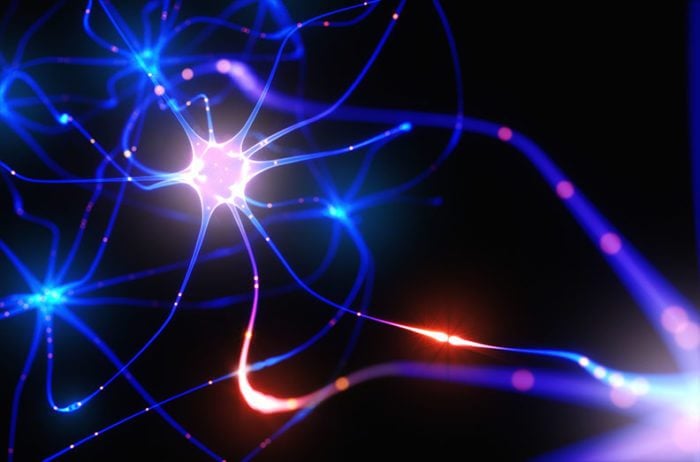 Neurodegenerative disorders number in the hundreds. All of them involve progressive degeneration of the structure and function of an area of the central nervous system and/or peripheral nervous system. Some — such as ALS, Parkinson’s disease, and Huntington’s disease — lead to devastating movement difficulties. Others, such as Alzheimer’s disease, lead to memory loss.
Neurodegenerative disorders number in the hundreds. All of them involve progressive degeneration of the structure and function of an area of the central nervous system and/or peripheral nervous system. Some — such as ALS, Parkinson’s disease, and Huntington’s disease — lead to devastating movement difficulties. Others, such as Alzheimer’s disease, lead to memory loss.
Over the last decade, researchers have found significant similarities in genetic and cellular mechanisms across neurodegenerative diseases.1,2Although each has a different clinical presentation and affects different parts of the brain, they share enough in common that researchers believe that some of the same factors contribute to their development.3
Why is this so important? It suggests that research advances in one disorder could benefit many others. In fact, researchers believe that by looking at the commonalities in biological pathways, cellular mechanisms, and genetics, they may be able to identify new targets for disease prevention and drug development for an array of neurodegenerative diseases.4
We’ll focus on the four most common neurodegenerative disorders: ALS, Parkinson’s disease, Huntington’s disease, and Alzheimer’s disease — all of which are characterized by abnormal protein accumulation and selective neuronal degeneration.
Oxidative Stress
Overproduction of reactive oxygen species in the brain interrupts normal cell function and even leads to cell death.
Researchers are looking at the role of NADPH-oxidase (NOX). NOX contributes to oxidative stress in neurological disorders, and its overproduction appears to play a role in various central nervous system disorders, including the four neurodegenerative diseases under discussion.
Some preclinical studies indicate that the inhibition of NOX improved neurological outcomes and reduced the severity of damage to the brain. These findings will likely lead to further investigation into the efficacy and safety of NOX inhibitors for neurodegenerative diseases.5
Protein accumulation
A primary feature common to many neurodegenerative disorders is the accumulation, or clumping, of improperly formed proteins.6 Here are two examples:
The toxic buildup of the transactive response DNA-binding protein-43, or TDP-43, occurs in about 97% of people with ALS and appears to be a prominent feature of several other neurodegenerative diseases7, such as Alzheimer’s Disease (40%-70%) and Frontotemporal Degeneration (FTD) (~50%). This opens the possibility of targeting TDP-43 to treat neurodegenerative diseases, researchers noted in a 2019 Journal of Neurochemistry However, they caution that “further strong efforts are needed to translate any discovered knowledge … into clinical practice.”8
Staufen1 is a protein that accumulates in the brains of patients with certain neurological disorders, including ALS and Alzheimer’s, Parkinson’s and Huntington’s disease. Researchers hope to ultimately develop a therapy to reduce Staufen1 levels in people at risk for ALS. “If lowering Staufen1 is effective for ALS, it could eventually lead to new therapeutic approaches for the treatment of Alzheimer’s disease and other Staufen1-related disorders,” they write in a 2021 Annals of Neurology9,10
Only the Beginning
Exploring these and other commonalities provides a promising approach to developing diagnostics and therapies for individual diseases and for neurodegeneration in general.11 These are just a few examples, and much work remains to be done. Nevertheless, the potential is tremendous. As Alzheimer’s researchers wrote in 2017, these commonalities provide “unprecedented opportunities to explore common therapeutic possibilities” for an array of neurodegenerative diseases, including ALS.12
Notes
- Introduction. Institute of Medicine. 2013. Neurodegeneration: Exploring Commonalities Across Diseases: Workshop Summary. Washington, DC: The National Academies Press. doi: 10.17226/18341
- Przedborski S, Vila M, Jackson-Lewis V. Neurodegeneration: what is it and where are we?. J Clin Invest. 2003;111(1):3-10. doi:10.1172/JCI17522
- Degenerative Nerve Diseases, Medline Plus, U.S. National Library of Medicine
- Ahmad, K. et al.: Commonalities in Biological Pathways, Genetics, and Cellular Mechanism between Alzheimer Disease and Other Neurodegenerative Diseases: An In Silico-Updated Overview. Current Alzheimer Research 14 (2017)
- Barua S, Kim JY, Yenari MA, Lee JE. The role of NOX inhibitors in neurodegenerative diseases. IBRO Rep. 2019; 7:59-69. Published 2019 Aug 1. doi:10.1016/j.ibror.2019.07.1721
- Wood LB, Winslow AR, Strasser SD. Systems biology of neurodegenerative diseases. Integr Biol (Camb). 2015;7(7):758-775. doi:10.1039/c5ib00031a
- Bahia VS, Takada LT, Deramecourt V. Neuropathology of frontotemporal lobar degeneration: a review. Dement Neuropsychol. 2013; 7(1):19-26. doi:10.1590/S1980-57642013DN70100004
- Gao J, et al. Pathomechanisms of TDP-43 in neurodegeneration [published online ahead of print, 2018 Feb 27]. J Neurochem. 2018;10.1111/jnc.14327. doi:10.1111/jnc.14327
- Paul, S. et al.: Staufen1 in Human Neurodegeneration. Annals of Neurology 89 (2021)
- Protein Linked to ALS/Ataxia Could Play Key Role in Other Neurodegenerative Disorders. University of Utah Health April 2021
- Ruffini N, Klingenberg S, Schweiger S, Gerber S. Common Factors in Neurodegeneration: A Meta-Study Revealing Shared Patterns on a Multi-Omics Scale. Cells. 2020;9(12):2642. doi:10.3390/cells9122642
- Ahmad, K. et al.: 2017, op. cit.





